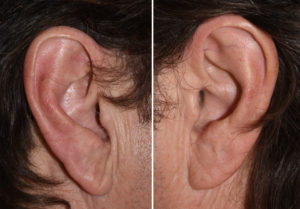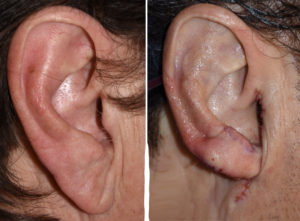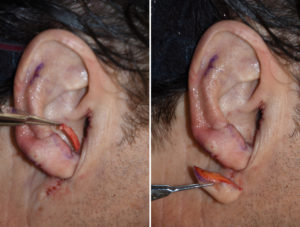Background: The external ear has a remarkable topographic complexity to it for being such a small craniofacial structure. Its many hills and valleys (convexities and concavities) give rise to over fifteen different subunit names. The earlobe is the only flat surface structure on the whole ear that has has no cartilage support.
Despite its anatomic structural diversity, the most common aesthetic operation of setback otoplasty changes on one of its features. (shape of the antihelical fold) This leads many to believe that the range of structural changes to an ear are very limited. But in reality every structure of the ear can be modified to some degree.


Total ear reshaping always more than one procedure and usually includes changes to structures in each third of the ear. Collectively numerous small procedures on the ear create a bigger change than any single one of them.
Highlights:
1) Th complex topography of the ear lends it to many possible reshaping procedures. of cartilage and skin
2) Any cartilage component of the ear can be reduced, augmented or reshaped.
3) Total ear reshaping consists of changes to the upper, middle and lower third of the ear.
Dr. Barry Eppley
Indianapolis, Indiana



